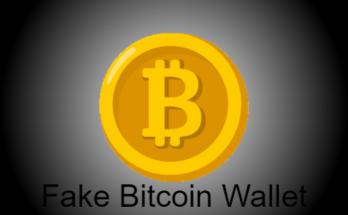The rise and fall of Bitcoin are one of the main topics of the global press. Why do leading economists pay so much attention to this payment tool? This issue is worth looking into in more detail. The cryptocurrency works like a kind of “perpetual motion machine”. Most transactions occur instantly, without the participation of intermediaries. This means that external factors cannot affect payment gateways.
Of course, blockchains are independent. But this is not the only advantage of the new payment ecosystem. Basically, anyone with a computer can mine bitcoins sharing the processing power. Some enthusiasts took risks by buying powerful computers and paying huge electricity bills. But how safe and justified is it? Let’s find out!
What is a Cryptocurrency?
Bitcoin (BTC) gave rise to crypto and Blockchain technology. The alternative coins appeared at the beginning of 2009, i.е. immediately after the onset of the global economic crisis. Problems that entrepreneurs had at that time affected confidence in governments and central banks. The new currency was supposed to provide fast, secure, and cheap payments without intermediaries. Most enthusiasts want to remain outside the control of governments and financial institutions.
⇒Join us on Telegram for more Sure and Accurate football-winning tips every day...click here
While Bitcoin is officially recognized as the first cryptocurrency, similar solutions (including Bit Gold or Hashcash) for decentralized e-payments have been around since the 1990s. Blockchain is based on the P2P (peer-to-peer) exchange network. Such an ecosystem allows people to make payments instantly, that is, without intermediaries. Bitcoins can be used for various transactions. It’s a simple, fast, and fairly secure way to pay in an auction or an online store.
Cryptocurrencies do not have a physical form but have a certain value, so such coins can be called virtual or digital money. With such an ecosystem, people can pay for a product or service in the same legal way as in Euros, Dollars, or other currencies. If entrepreneurs provide a unique address for their Bitcoin wallet, their partners will be able to easily transfer funds bypassing the bank and other intermediaries.
Some tokens that are currently in the financial market are based on standard commodities — gold or currency. Stablecoins include solutions such as Tether (USDT), USD Binance (BUSD), or USD Coin (USDC). Such title units are mainly used for trading on exchanges like ICOholder. These are a kind of virtual fiat (usually dollars) for which investors buy and sell other tokens and cryptocurrencies.
Cryptocurrency & Payment Security
The most important benefit of the crypto ecosystem is the security of e-wallets. Coins are not processed by any intermediaries(banks, government agencies) during the transaction. Since international trade is based on traditional money, currency conversion is associated with high costs. But this is not the case for decentralized finance. Bitcoins are instantly transferred to the target account, regardless of the counterparty’s country of residence. This means that the user has the following benefits:
- No payment delays
- No bank account blocking
- Minimum margin per transaction and account usage
Payment with cryptocurrencies is extremely safe, much more reliable than transferring coins using bank accounts. This is a fact that any experienced economist will confirm. Despite this, there have been reports of bitcoin being stolen or lost. But, the scale is not comparable to the daily hacks of traditional bank accounts. So, global banks are adopting cryptocurrencies.
Bitcoin & e-Commerce
Blockchain technology works in such a way that it prevents counterfeiting of both cryptocurrencies and gateway. Such principles are associated with good prospects. As a decentralized system, it does not require the involvement of intermediaries. All transactions take place directly between the sending and receiving parties(e-wallets). This is the best option for e-commerce. The details of the transaction are clear only to the counterparties, although the accounting register and the basic data are publicly available.
Of course, bitcoin transactions in online marketing are very popular. Setting up such a payment gateway will not be difficult. This can be done through the website or app. To date, many services of this type have been created, which are very similar to well-known solutions such as PayPal. The most common are BitPay, BIPS, and BTC Merch. Such ecosystems are indispensable for entrepreneurs who sell products online.
What About Trading?
As for the potential profit, it is worth mentioning that initially, Bitcoin’s price was only a few cents. But 8 years later its rate reached $20,000. On peak in April 2021, we had $65,000. It would seem that these are the best conditions for investing. But, enthusiasts should not forget the dynamic price drops which took place during this time. Buying a cryptocurrency at the peak before the collapse, people can lose 70-80% of the value in a few weeks. Because of such risks, investors are not always interested in adopting a cryptocurrency. Although given that the ecosystem is constantly improving, this payment tool can be promising.
Prospects for the Cryptocurrency Ecosystem in 2022
Cryptocurrencies that emerged after Bitcoin grew are called altcoins. The oldest and most common solutions are Ethereum, Litecoin, Ripple (Monero). But these are not the only alternative ecosystems. There are several thousand virtual currencies and tokens like BTC. Some enthusiastic financiers offer useful, even revolutionary solutions, but people can find dozens of useless projects and even scams. Despite the huge, dynamic market development, Bitcoin still makes up 40-60% of total capitalization. This means that it is not easy to offer a payment tool that is superior to BTC.
Even 10 years ago, altcoins were based on the BTC solutions that were supposed to be faster, more efficient, and useful. Dozens of “Bitcoin 2.0s” have been created but no alternative cryptocurrency has revolutionized the market. Over the years, this situation has changed. Projects associated with solving problems of connectivity (smart contracts) with external data sources are a priority. Platforms that are based on multiple blockchains like Chainlink and Polkadot are of great interest to the investor.
Key Takeaway
Transactions with digital coins are good alternatives for standard currencies. It’s about an independent ecosystem, nothing in common with classical financial systems. All transactions with ”virtual money” do not request intermediaries and are not controlled by the Central Bank or other institutions. No external organization can decide on the amount of crypto emission or directly influence the market. So decentralized ecosystems are becoming more and more popular. The investment attractiveness of such projects is unlikely to be denied.




